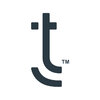Filter interviews by
Expert Global Solutions Interview Questions and Answers
22 Interview questions
GD&T stands for Geometric Dimensioning and Tolerancing, a system used in engineering design to define the nominal geometry of parts and assemblies.
GD&T is a symbolic language used on engineering drawings to communicate design intent for form, fit, and function.
It includes symbols, such as datum references, geometric characteristics, and tolerance zones, to specify the allowable variations in dimensions and...
Welding symbols are graphical representations used in engineering drawings to communicate welding information.
Welding symbols indicate the type of weld, dimensions, and other important information related to the welding process.
They help in specifying the welding requirements without the need for lengthy written explanations.
Common welding symbols include fillet weld, groove weld, plug weld, spot weld, etc.
Example...
First-angle and third-angle projection methods are two different approaches used in engineering drawings to represent a 3D object in 2D.
First-angle projection method is commonly used in Europe and Asia, where the object is imagined to be in the first quadrant and the views are projected onto the planes of projection from the object's side.
Third-angle projection method is commonly used in North America, where the o...
There are a total of 14 Geometric Dimensioning and Tolerancing (GD&T) symbols.
There are 14 GD&T symbols used to define the geometry of mechanical parts.
These symbols include Position, Concentricity, Symmetry, Circularity, etc.
Each symbol has a specific meaning and is used to communicate design requirements accurately.
GD&T symbols help in specifying the allowable variations in form, size, and orientatio...
Different types of welding include MIG, TIG, stick, flux-cored, and spot welding.
MIG welding uses a wire electrode and shielding gas to join metals together.
TIG welding uses a tungsten electrode and inert gas to create a strong weld.
Stick welding, also known as shielded metal arc welding, uses a flux-coated electrode.
Flux-cored welding uses a tubular wire filled with flux to protect the weld.
Spot welding is common...
Surface treatment processes are used to improve the properties of a material's surface for various applications.
Coating: Applying a thin layer of material to the surface for protection or aesthetic purposes (e.g. painting, anodizing).
Plating: Depositing a layer of metal onto the surface for corrosion resistance or improved appearance (e.g. electroplating, galvanizing).
Heat treatment: Altering the material's proper...
Various manufacturing processes include casting, machining, welding, forming, and additive manufacturing.
Casting: involves pouring molten metal into a mold to create a desired shape (e.g. sand casting, die casting)
Machining: involves removing material from a workpiece using cutting tools (e.g. milling, turning)
Welding: involves joining two or more pieces of metal together using heat and/or pressure (e.g. arc weldi...
Different types of metal joints include welded joints, bolted joints, riveted joints, soldered joints, and adhesive joints.
Welded joints involve melting and fusing the metal pieces together.
Bolted joints use bolts and nuts to secure the metal pieces together.
Riveted joints use rivets to hold the metal pieces together.
Soldered joints involve melting a filler metal to join the pieces together.
Adhesive joints use adh...
GD&T stands for Geometric Dimensioning and Tolerancing, a system used to define and communicate engineering tolerances.
GD&T is a symbolic language used on engineering drawings to specify the allowable variations in form, size, and orientation of features.
It helps ensure that parts fit together properly and function as intended.
GD&T uses symbols such as concentricity, flatness, perpendicularity, and position to com...
Pascal is a unit of pressure in the International System of Units (SI).
Pascal is equivalent to one newton per square meter.
It is used to measure pressure in various fields such as physics, engineering, and meteorology.
For example, atmospheric pressure is often measured in pascals.
Expert Global Solutions Interview Experiences
33 interviews found
I appeared for an interview in May 2025, where I was asked the following questions.
- Q1. What is powera apps
- Ans.
PowerApps is a Microsoft platform for building custom business applications without extensive coding knowledge.
Enables users to create apps using a drag-and-drop interface.
Integrates seamlessly with other Microsoft services like SharePoint and Dynamics 365.
Supports various data sources, including SQL Server, Excel, and cloud services.
Allows for automation of workflows through Power Automate integration.
Example: A compa...
- Q2. Sceniaro based questions on canvas application
- Q3. How you handle exceptions in powerapps I got selected they told me im shortlisted and they told me vacancy is on hold and now they are saying me to look for another job its worst company.
Interview Preparation Tips
I applied via LinkedIn and was interviewed in Jun 2024. There was 1 interview round.
(7 Questions)
- Q1. What is the total number of Geometric Dimensioning and Tolerancing (GD&T) symbols?
- Ans.
There are a total of 14 Geometric Dimensioning and Tolerancing (GD&T) symbols.
There are 14 GD&T symbols used to define the geometry of mechanical parts.
These symbols include Position, Concentricity, Symmetry, Circularity, etc.
Each symbol has a specific meaning and is used to communicate design requirements accurately.
GD&T symbols help in specifying the allowable variations in form, size, and orientation of ...
- Q2. What are the different types of welding?
- Ans.
Different types of welding include MIG, TIG, stick, flux-cored, and spot welding.
MIG welding uses a wire electrode and shielding gas to join metals together.
TIG welding uses a tungsten electrode and inert gas to create a strong weld.
Stick welding, also known as shielded metal arc welding, uses a flux-coated electrode.
Flux-cored welding uses a tubular wire filled with flux to protect the weld.
Spot welding is commonly us...
- Q3. What are welding symbols and their significance in engineering drawings?
- Ans.
Welding symbols are graphical representations used in engineering drawings to communicate welding information.
Welding symbols indicate the type of weld, dimensions, and other important information related to the welding process.
They help in specifying the welding requirements without the need for lengthy written explanations.
Common welding symbols include fillet weld, groove weld, plug weld, spot weld, etc.
Examples of ...
- Q4. What are the various manufacturing processes?
- Ans.
Various manufacturing processes include casting, machining, welding, forming, and additive manufacturing.
Casting: involves pouring molten metal into a mold to create a desired shape (e.g. sand casting, die casting)
Machining: involves removing material from a workpiece using cutting tools (e.g. milling, turning)
Welding: involves joining two or more pieces of metal together using heat and/or pressure (e.g. arc welding, s...
- Q5. What are the various surface treatment processes?
- Ans.
Surface treatment processes are used to improve the properties of a material's surface for various applications.
Coating: Applying a thin layer of material to the surface for protection or aesthetic purposes (e.g. painting, anodizing).
Plating: Depositing a layer of metal onto the surface for corrosion resistance or improved appearance (e.g. electroplating, galvanizing).
Heat treatment: Altering the material's properties ...
- Q6. What are the different types of metal joints?
- Ans.
Different types of metal joints include welded joints, bolted joints, riveted joints, soldered joints, and adhesive joints.
Welded joints involve melting and fusing the metal pieces together.
Bolted joints use bolts and nuts to secure the metal pieces together.
Riveted joints use rivets to hold the metal pieces together.
Soldered joints involve melting a filler metal to join the pieces together.
Adhesive joints use adhesive...
- Q7. What is the difference between the first-angle and third-angle projection methods?
- Ans.
First-angle and third-angle projection methods are two different approaches used in engineering drawings to represent a 3D object in 2D.
First-angle projection method is commonly used in Europe and Asia, where the object is imagined to be in the first quadrant and the views are projected onto the planes of projection from the object's side.
Third-angle projection method is commonly used in North America, where the object...
(2 Questions)
- Q1. What is GD and T?
- Ans.
GD&T stands for Geometric Dimensioning and Tolerancing, a system for defining and communicating engineering tolerances.
GD&T is a symbolic language used on engineering drawings to specify the allowable variations in form, size, and orientation of features.
It helps ensure that parts fit together properly and function as intended.
GD&T uses symbols such as concentricity, flatness, perpendicularity, and position...
- Q2. Welding symbols
I appeared for an interview in Jul 2024.
(2 Questions)
- Q1. 3D modelling on proposed software
- Ans.
3D modelling involves creating digital representations of objects or environments using specialized software.
Use software like AutoCAD, SolidWorks, or Blender to create 3D models
Understand geometric shapes, textures, and lighting to create realistic models
Consider scale, dimensions, and accuracy when creating 3D models
Practice creating different types of models such as mechanical parts, buildings, or characters
- Q2. 2D drafting
(2 Questions)
- Q1. What is GD&T in design
- Ans.
GD&T stands for Geometric Dimensioning and Tolerancing, a system used in engineering design to define the nominal geometry of parts and assemblies.
GD&T is a symbolic language used on engineering drawings to communicate design intent for form, fit, and function.
It includes symbols, such as datum references, geometric characteristics, and tolerance zones, to specify the allowable variations in dimensions and geom...
- Q2. Types of manufacturing process
- Ans.
Manufacturing processes are methods used to transform raw materials into finished products.
Casting: pouring molten material into a mold to create a desired shape (e.g. metal casting)
Machining: removing material from a workpiece to achieve the desired shape (e.g. milling, turning)
Forming: shaping a material without removing any material (e.g. bending, stamping)
Joining: combining two or more pieces of material to create ...
- Q1. Introduce about yourself
- Ans.
Experienced Senior Accountant with a strong background in financial reporting, analysis, and compliance, dedicated to driving efficiency.
Over 8 years of experience in accounting and finance, specializing in financial reporting and analysis.
Managed a team of 5 accountants, improving the month-end closing process by 20%.
Expert in using accounting software like QuickBooks and SAP for accurate financial reporting.
Successfu...
- Q2. Group discussion
- Q3. Finance Accounting Accountant
- Q4. Accounting representative
(2 Questions)
- Q1. Introduce yourself
- Q2. Welding
Interview Preparation Tips
(1 Question)
- Q1. Autodesk Inventor modeling test.
- Ans.
Autodesk Inventor modeling test
Use sketch tools to create 2D profiles
Extrude or revolve the profiles to create 3D shapes
Apply constraints and dimensions for accuracy
Use features like fillets, chamfers, and patterns to enhance the model
(2 Questions)
- Q1. Stress and strain curves
- Q2. G d n t
Interview Preparation Tips
So be careful before resigning from your current job to join the company.
I applied via Approached by Company and was interviewed in May 2024. There was 1 interview round.
(2 Questions)
- Q1. What is gd t
- Ans.
GD&T stands for Geometric Dimensioning and Tolerancing, a system used to define and communicate engineering tolerances.
GD&T is a symbolic language used on engineering drawings to specify the allowable variations in form, size, and orientation of features.
It helps ensure that parts fit together properly and function as intended.
GD&T uses symbols such as concentricity, flatness, perpendicularity, and position to communic...
- Q2. What is pascal low
- Ans.
Pascal is a unit of pressure in the International System of Units (SI).
Pascal is equivalent to one newton per square meter.
It is used to measure pressure in various fields such as physics, engineering, and meteorology.
For example, atmospheric pressure is often measured in pascals.
Basic Aptitude test base on math , numericals
(2 Questions)
- Q1. Tell me about yourself
- Ans.
I am a recent graduate with a degree in Computer Science and a passion for coding and problem-solving.
Graduated with a degree in Computer Science
Passionate about coding and problem-solving
Completed internships at tech companies
- Q2. Technical skills
Top trending discussions






Expert Global Solutions Interview FAQs
The duration of Expert Global Solutions interview process can vary, but typically it takes about less than 2 weeks to complete.
Tell us how to improve this page.
Expert Global Solutions Interviews By Designations
- Expert Global Solutions Design Engineer Interview Questions
- Expert Global Solutions Senior Design Engineer Interview Questions
- Expert Global Solutions Design and Application Engineer Interview Questions
- Expert Global Solutions Mechanical Engg. Design Interview Questions
- Expert Global Solutions Graphic Designer Interview Questions
- Expert Global Solutions Graduate Engineer Interview Questions
- Expert Global Solutions Graduate Trainee Interview Questions
- Expert Global Solutions Intern Interview Questions
- Show more
Interview Questions for Popular Designations
Overall Interview Experience Rating
based on 35 interview experiences
Difficulty level
Duration
Interview Questions from Similar Companies
Expert Global Solutions Reviews and Ratings
based on 318 reviews
Rating in categories
|
Design Engineer
495
salaries
| ₹3.7 L/yr - ₹8 L/yr |
|
Senior Design Engineer
172
salaries
| ₹5 L/yr - ₹10.3 L/yr |
|
Data Engineer
61
salaries
| ₹1.2 L/yr - ₹6.6 L/yr |
|
Mechanical Engg. Design
41
salaries
| ₹2.4 L/yr - ₹7.5 L/yr |
|
Team Lead
30
salaries
| ₹6.8 L/yr - ₹12 L/yr |

Quess

Statestreet HCL Services

Alldigi Tech

IntouchCX
- Home >
- Interviews >
- Expert Global Solutions Interview Questions













